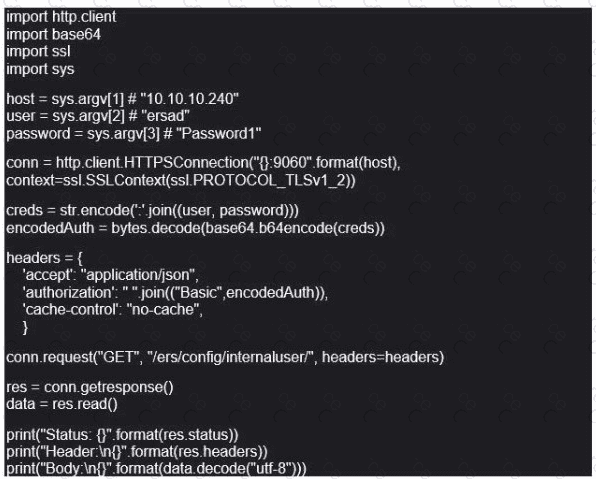The Python script accomplishes the following tasks:
It imports the required libraries for HTTP, base64, SSL, and sys modules.
It takes the host, user, and password information from the command line arguments and assigns them to variables.
It creates an HTTPS connection object using the host and port 9060, and specifies the SSL protocol as TLSv1_2.
It encodes the user and password information in base64 format for basic HTTP authentication.
It sets the headers for the HTTP request, including the accept, authorization, and cache-control fields.
It sends a GET request to the Cisco ISE server to retrieve information from the “/ers/config/internaluser/” endpoint, which returns the list of internal users configured on Cisco ISE.
It reads the response from the server and prints the status, headers, and body in a human-readable format.
The script authenticates to the Cisco ISE server using the username of ersad and the password of Password1, and retrieves the internal user information from the server.
[References:, Implementing and Operating Cisco Security Core Technologies (SCOR) v1.0, Module 5: Secure Network Access, Lesson 2: Cisco Identity Services Engine, Topic: Cisco ISE REST API, Cisco Identity Services Engine API Reference Guide, Release 2.7 - Cisco ISE ERS API Overview [Cisco Identity Services Engine], Python 3 - HTTP Client - Tutorialspoint, , ]

Submit